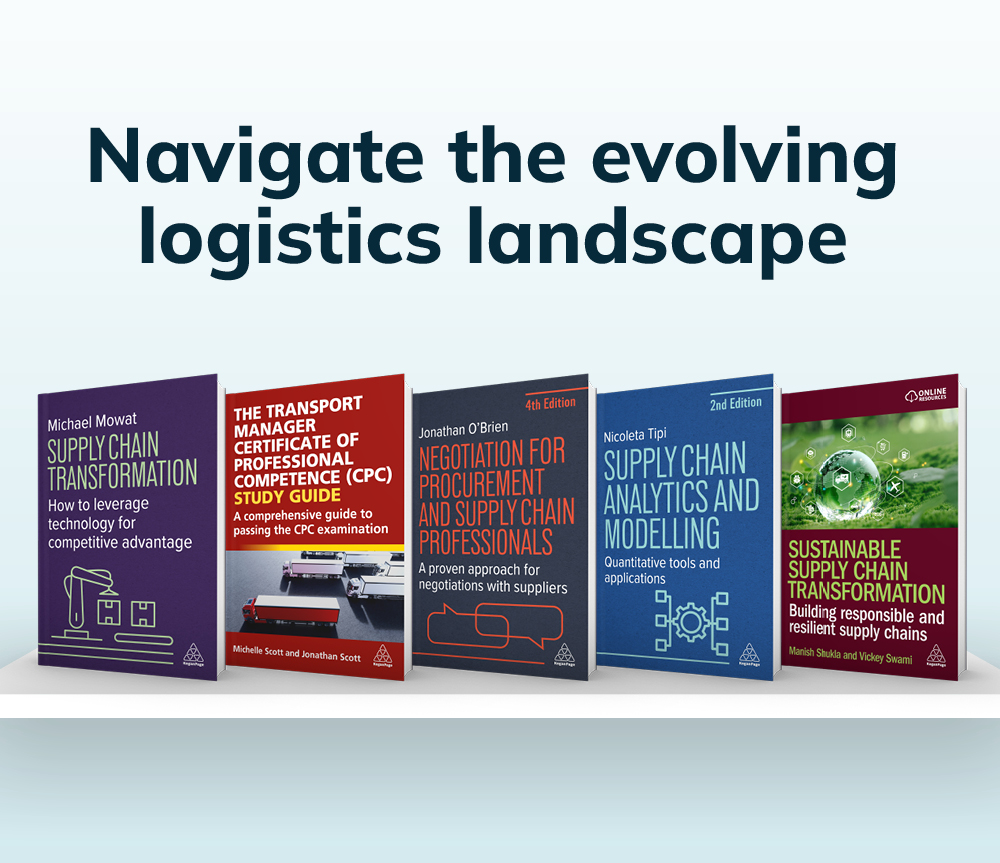Get a FREE ebook with your print copy when you select the "bundle" option. T&Cs apply.
Logistics, Supply Chain & Operations Books
Latest books in Logistics, Supply Chain & Operations
Trending books
Latest insights in Logistics, Supply Chain & Operations
Logistics, Supply Chain & Operations, Transport In this article, Ashley Rimmer provides an in-depth overview of the Operator’s Licence application process, outlining the key requirements, types of licences and best practices for a successful application.
Sustainability, Logistics, Supply Chain & Operations, Transport, Sustainable Logistics The transport industry is under pressure to reduce emissions and improve efficiency. In this article, Ashley Rimmer explores ways that transport operators can achieve a more sustainable and cost-effective fleet for sustainable transport.
Logistics, Procurement, Operations Discover the key governance components that organizations must implement to enable effective Category Management.
Publishing soon




.png)


